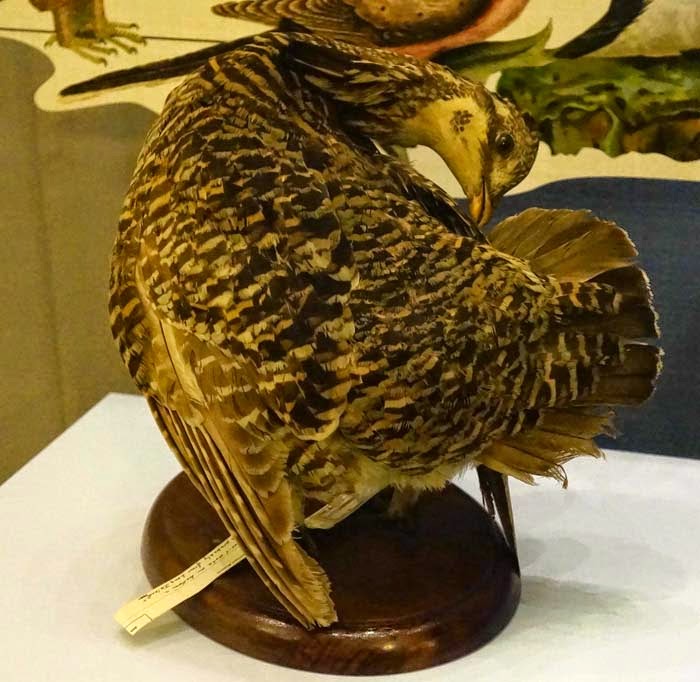 |
| Illustration of a Passenger Pigeon by Mark Catesby, The Natural History of Carolina, Florida and the Bahama Islands, 1729-1747 |
Once there were billions. Now there are none. One hundred and fifty years ago gigantic flocks of passenger pigeons blackened the skies of North America. However, due to indiscriminate hunting and habitat destruction, the flocks rapidly diminished, and by 1914 only one passenger pigeon remained alive. She was known as “Martha” and lived in the Cincinnati Zoo. When she died one hundred years ago, the species became extinct.
 |
| Passenger Pigeons; Martha, #11, on left |
Martha’s body was sent to the Smithsonian Museum in Washington, DC, where she was preserved and put in the research collection. She has been off of public view since the 1960's, but in this centenary of her demise, she is once again on view and is the center of a special exhibit,
Once There Were Billions: Vanished Birds of North America.
Recently, I had a chance to visit the Natural History Museum and see Martha for myself, along with other now extinct birds including the Carolina Parakeet, Great Auk and the Heath Hen. Martha is displayed with several other passenger pigeons from the museum collection and with historic illustrations from the archives of the Smithsonian library. Distinctive features of the passenger pigeon are warm pink breast feathers and soft grey feathers on the back and wings. (Passenger pigeons are related to another native American species, the band-tailed pigeon-- not the ubiquitous pigeons that inhabit our towns and cities, a non-native species imported from Europe.)
The passenger pigeon was among the many birds painted by John James Audubon for his book
The Birds of America. In 1940, Norman Rockwell painted a picture for
Look Magazine depicting a scene of Audubon observing passenger pigeons in flight.
 |
| Great Auk with Audubon print above |
The Smithsonian’s Great Auk is one of about 80 museum specimens. Living in large colonies along North Atlantic shores, the birds were easily slaughtered for their meat, eggs, feathers, and oil. They were extinct by the mid-1800's.
 |
| Heath Hen |
In colonial times, Heath Hens flourished from Maine to Virginia, but they were tasty and easy to kill and their numbers quickly declined. The last heath hen, living in a sanctuary on Martha’s Vineyard, died in 1932.
 |
| Carolina Parakeets |
Carolina Parakeets, prized as decorations for ladies’ hats, became extinct in the wild by 1904; the last one died in captivity in 1918.
The story of the last Passenger Pigeon and the disappearance of the Great Auk, Carolina Parakeet and Heath Hen, illustrate the fragile connections between species and their environment. This exhibit reminds us all that we need to pay attention to the natural world and the complex connections of all the living things in it.
Note: Audubon Magazine featured the story of the Passenger Pigeon in its June 2014 issue, which included a pull-out origami Passenger Pigeon and link to a website “
Fold the Flock” designed to create awareness of the Passenger Pigeon's plight as the folded birds are added to the virtual flock. For more, click
HERE to see my post at my
Caroline Arnold Art and Books blog.





















